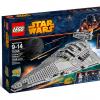Sign in to follow this
Followers
0

Number of Parts used in Technic Sets
By
valenciaeric, in LEGO Technic, Mindstorms, Model Team and Scale Modeling
-
Recently Browsing 0 members
No registered users viewing this page.
